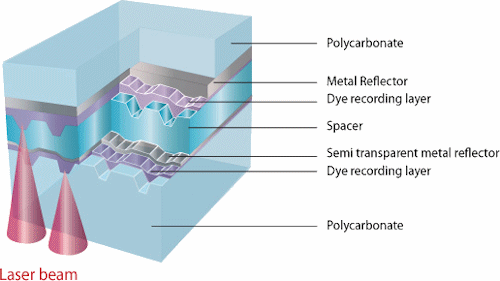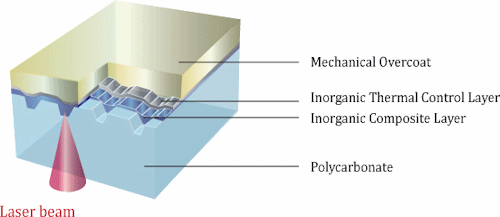Dubbed the M-ARC 'Millennial Archive Disc', Millenniata Inc.'s discs are expected to reach market later this year, and are the result of work first started at Brigham Young University. They have a claimed lifetime of 1,000 years according to the Herald's article, and are described on Millenniata's website as having a capacity of 4.7 gigabytes. Few details are available on the precise makeup of the discs, but we understand that they replace the organic dye-based layer on which a traditional optical disc's data is written with an inorganic material described as being "similar to obsidian". Although the method used to burn an M-ARC disc is similar to that of traditional write-once optical discs, Millenniata's technology requires the use of the company's own M-WRITER drive due to the need for a more powerful laser with which to etch the disc's data layer.
The Herald suggests that Millenniata is currently in the process of negotiating licenses, preparatory to starting manufacture of M-ARC discs and M-WRITER drives. Brigham Young University has apparently applied for initial patents to cover the technology, prior to spinoff of Millenniata through its Technology Transfer Office. As for the claimed lifetime of the discs, no independent confirmation (or indeed, even any description of methodology for in-house testing) is currently available. Instead, it seems the lifetime claim is being made solely based on the properties of the materials selected, with a suggestion that the polycarbonate layer is the discs' weakest point.
Independent testing and confirmation of the M-ARC disc's reliability is clearly needed. If the claims do turn out to be realistic, though, then Millenniata will likely find significant interest - even at the relatively high $25-30 expected cost per disc at launch. The potential labor and material savings versus having to duplicate standard optical discs every few years to prevent data loss would make the technology attractive, and the ability to read the discs with existing drives would ease adoption.
Standard Optical Disc: 
|
M-ARC 'Millennial Archive Disc': 
|
Composition of a standard optical disc (top) as compared to Millenniata's M-ARC 'Millennial Archive Disc' (bottom).
Images provided by Millenniata Inc. |